
Online Documentation:
https://ministryoftattoo.wixsite.com/home
Print Documentation:
https://drive.google.com/open?id=1cYDO8ktzb0ymI_nN7zqmQpjvDt-G6hNP
Product Video:
https://drive.google.com/open?id=1Wb M3BKZDCw9edVR18QgU_k3o1O5gnoA

Based on work by Hannah Perner-Wilson, Andrew Quitmeyer, Rad students, and more!

Online Documentation:
https://ministryoftattoo.wixsite.com/home
Print Documentation:
https://drive.google.com/open?id=1cYDO8ktzb0ymI_nN7zqmQpjvDt-G6hNP
Product Video:
https://drive.google.com/open?id=1Wb M3BKZDCw9edVR18QgU_k3o1O5gnoA
On Week 11, we conducted an outside-of-class workshop on Sensory Art. Sensory Art consists of hands-on activities that relate to our senses (touch, sight, sound, smell, etc). With materials that can be easily found at home, you get to stimulate your creativity and engage in free play. For this workshop, we had two different activities – Nail polish marbling and Butter soap making.
Nail Polish Marbling
Materials used: Cup, Water, Nail polish, Toothpicks, Item to marble
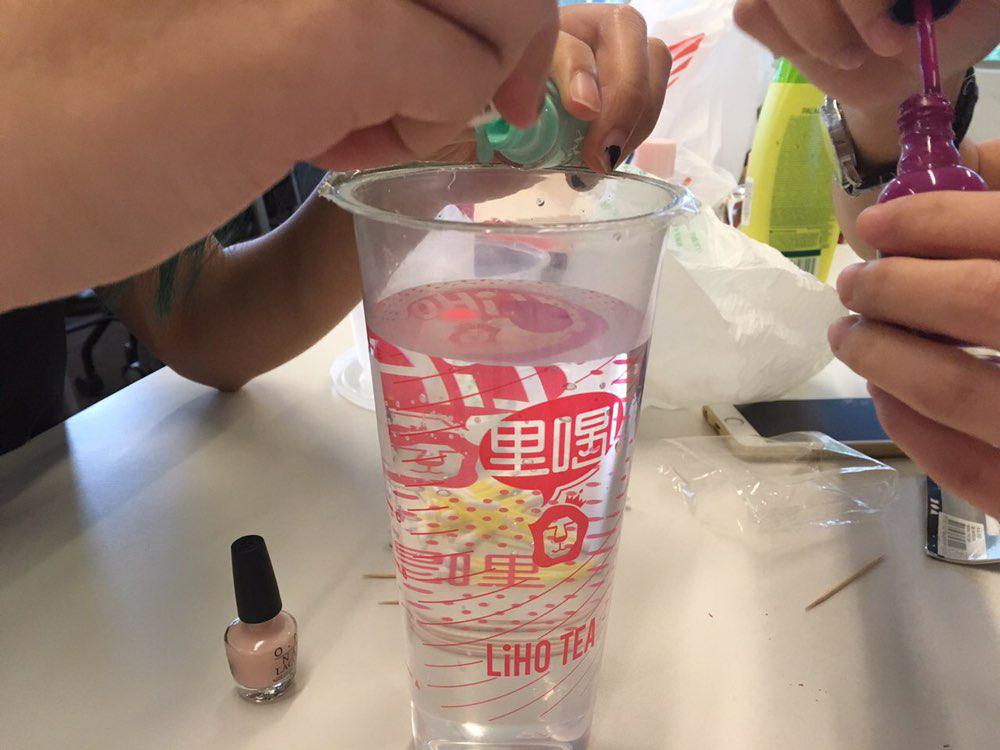
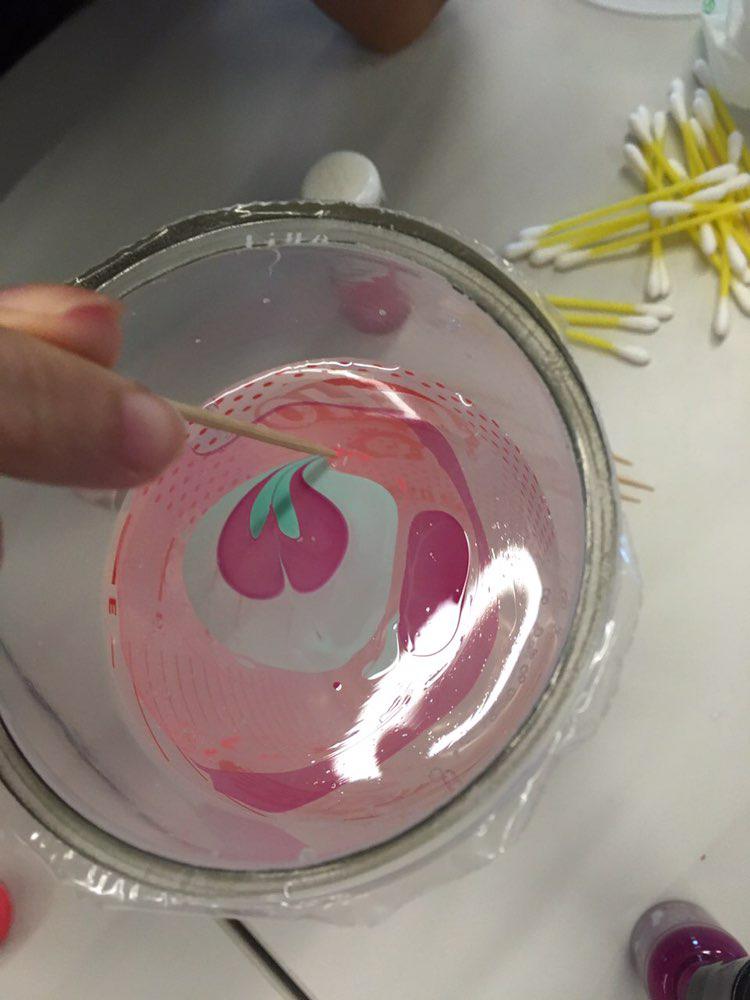
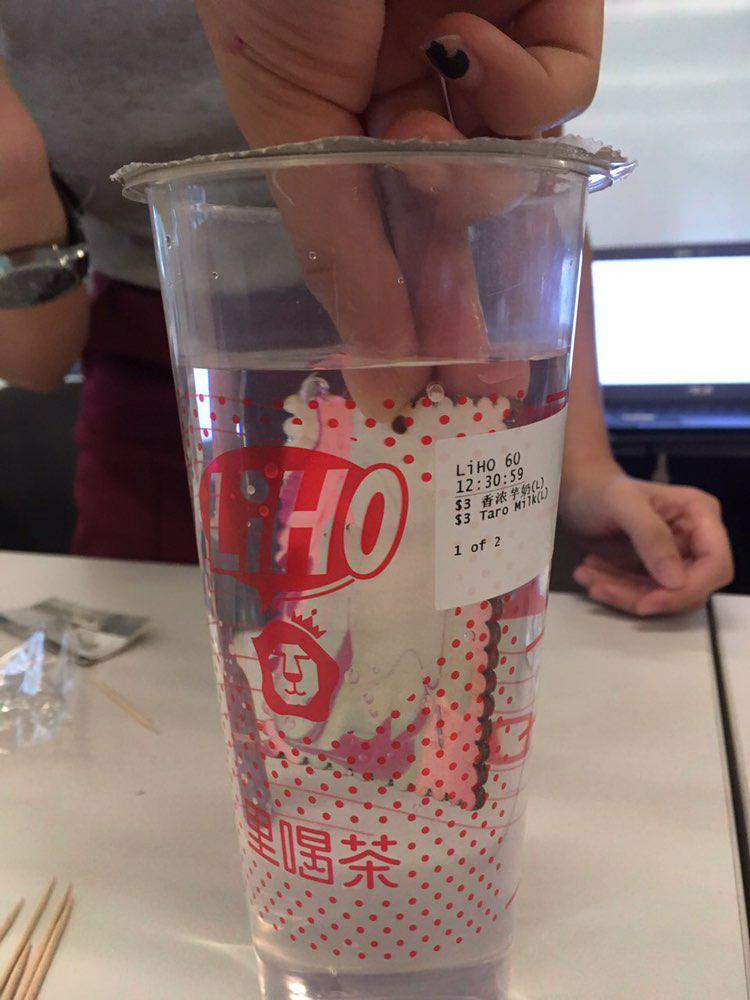

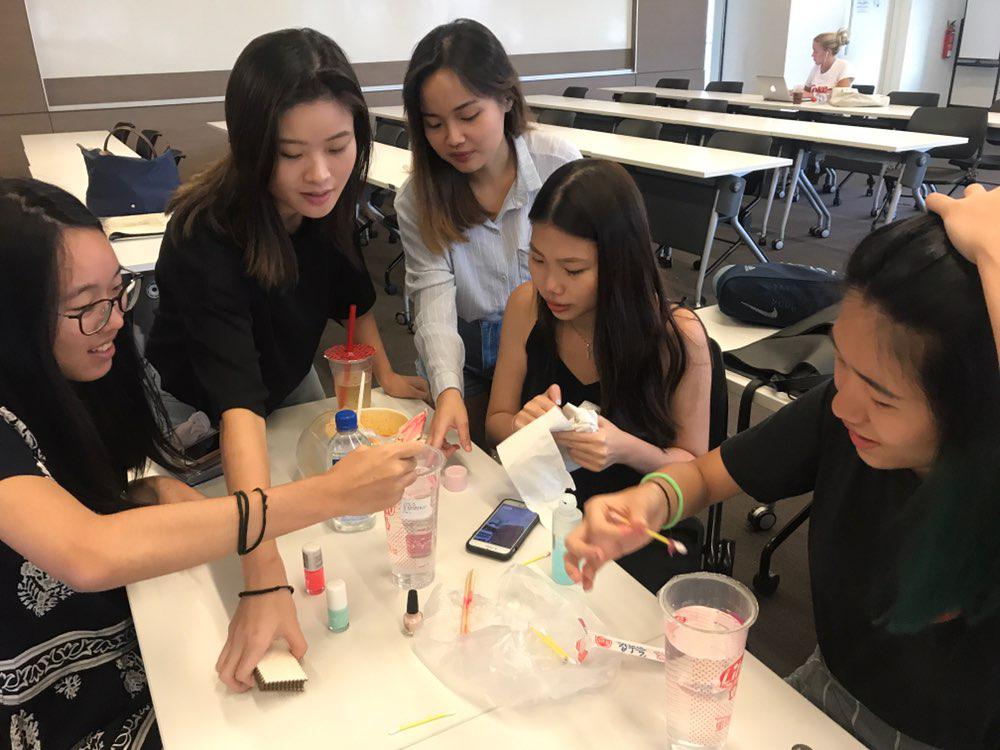
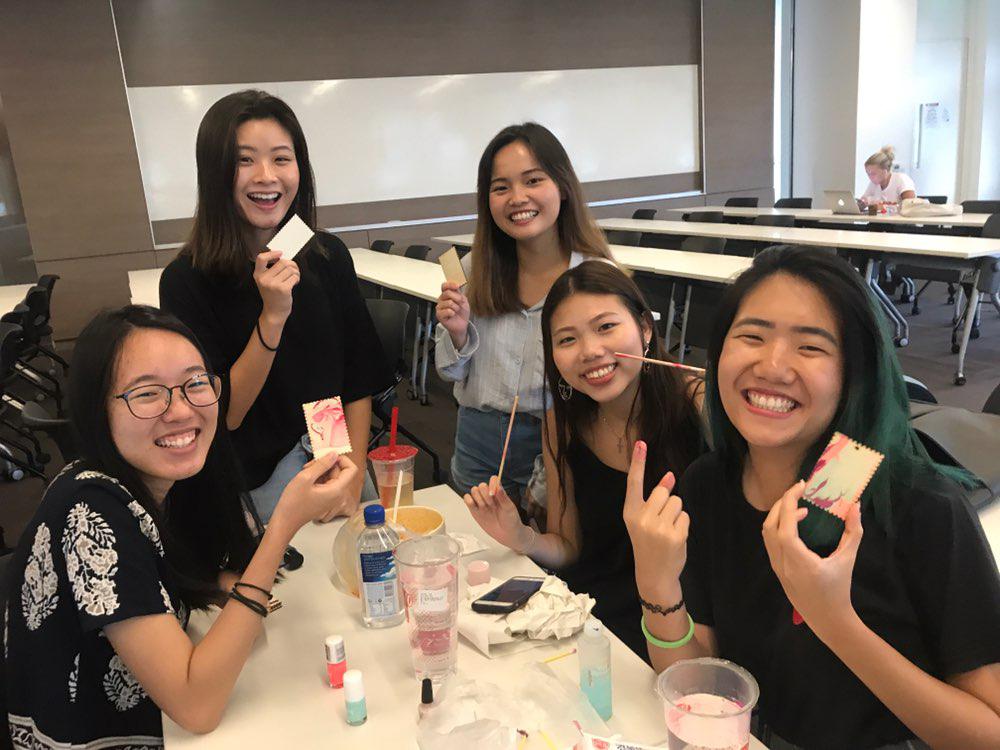
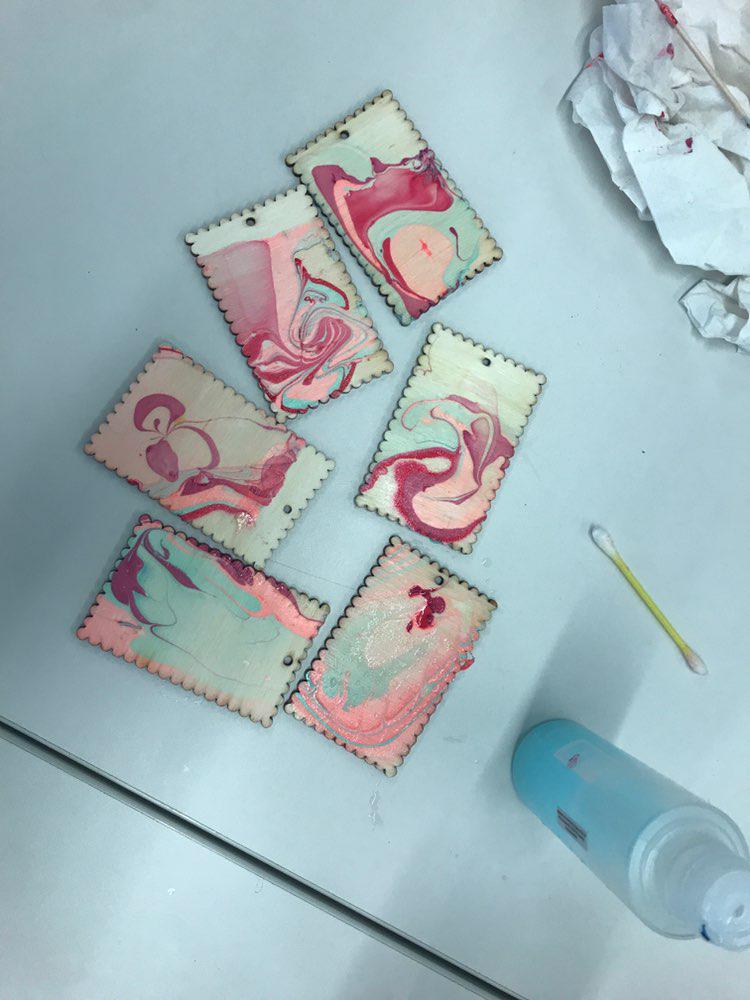
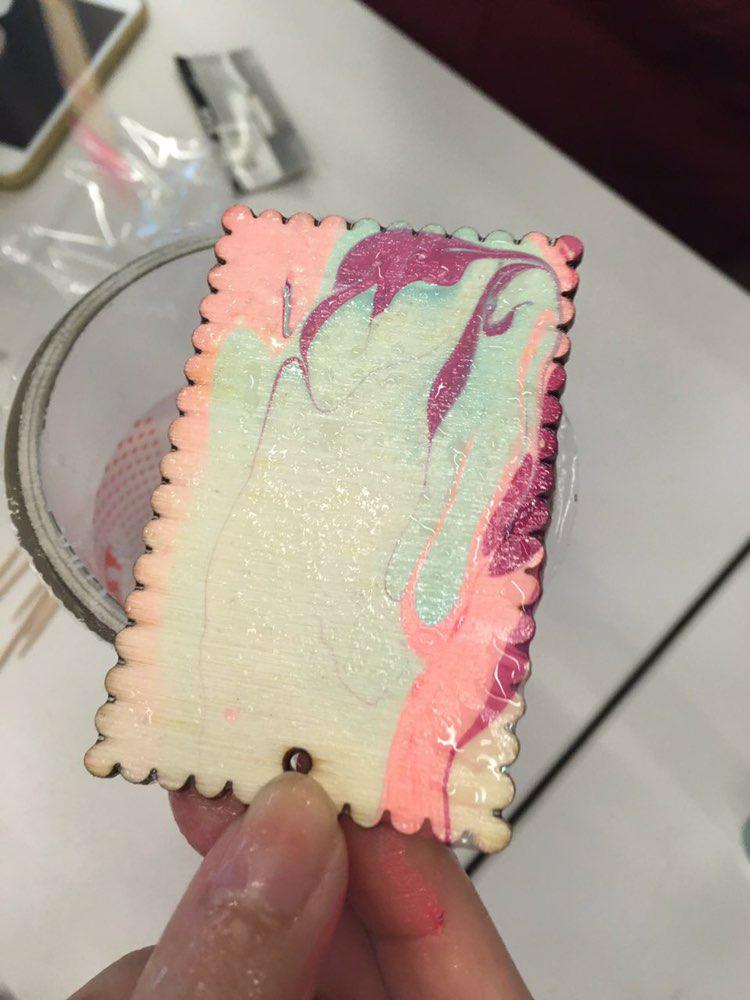
Butter Soap Making
Materials used: Container, Shampoo, Corn starch, Baby oil
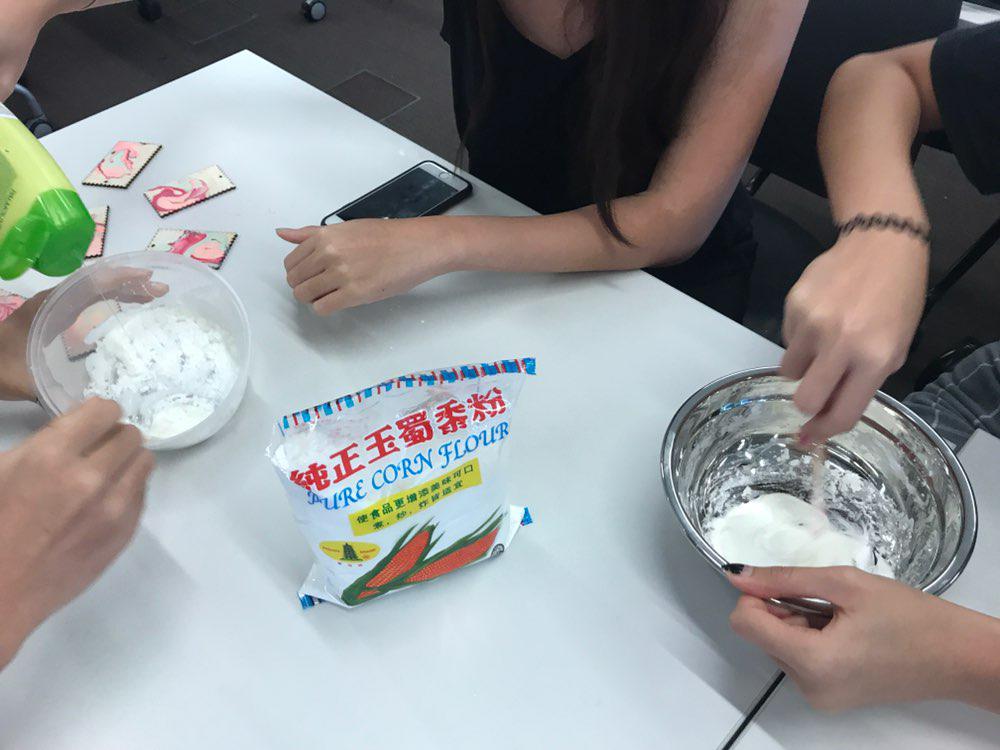
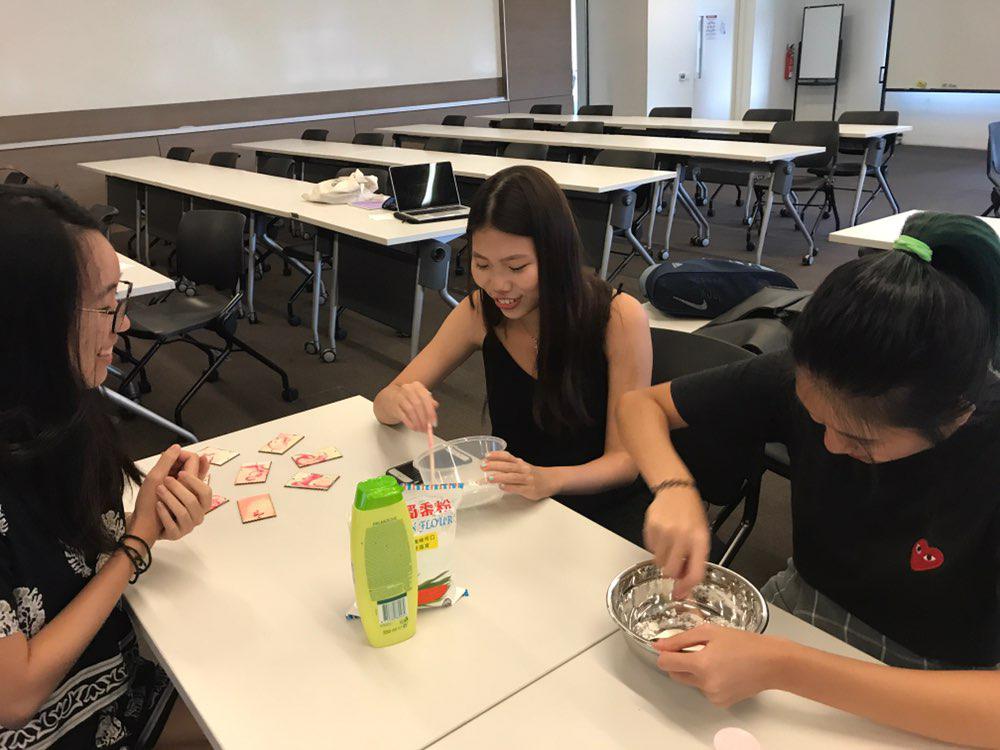
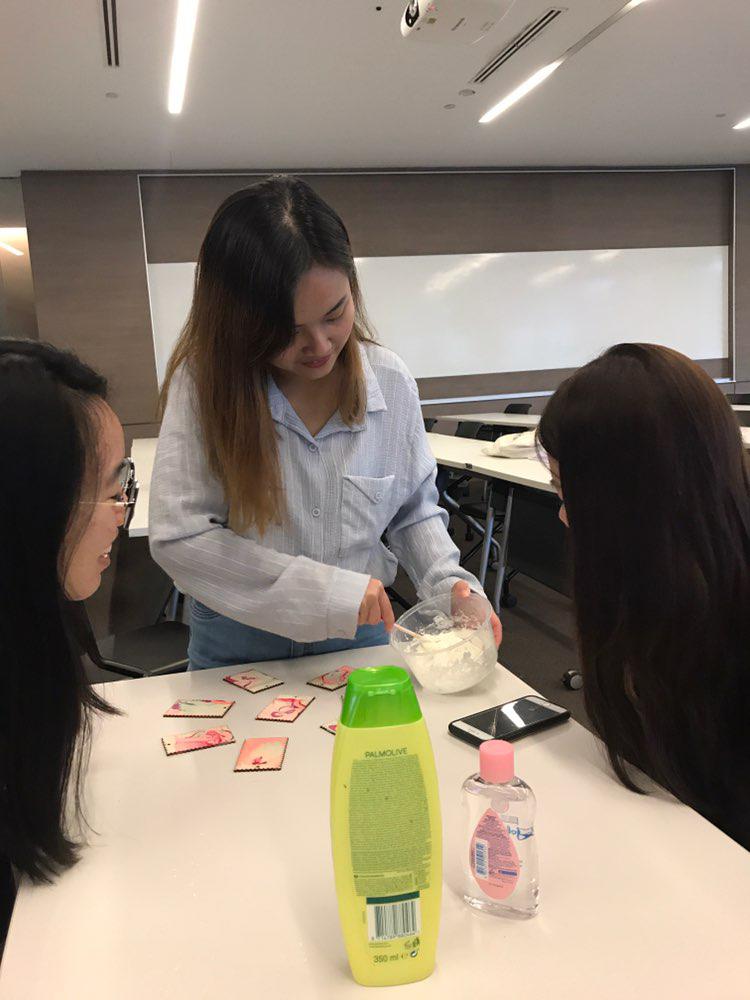
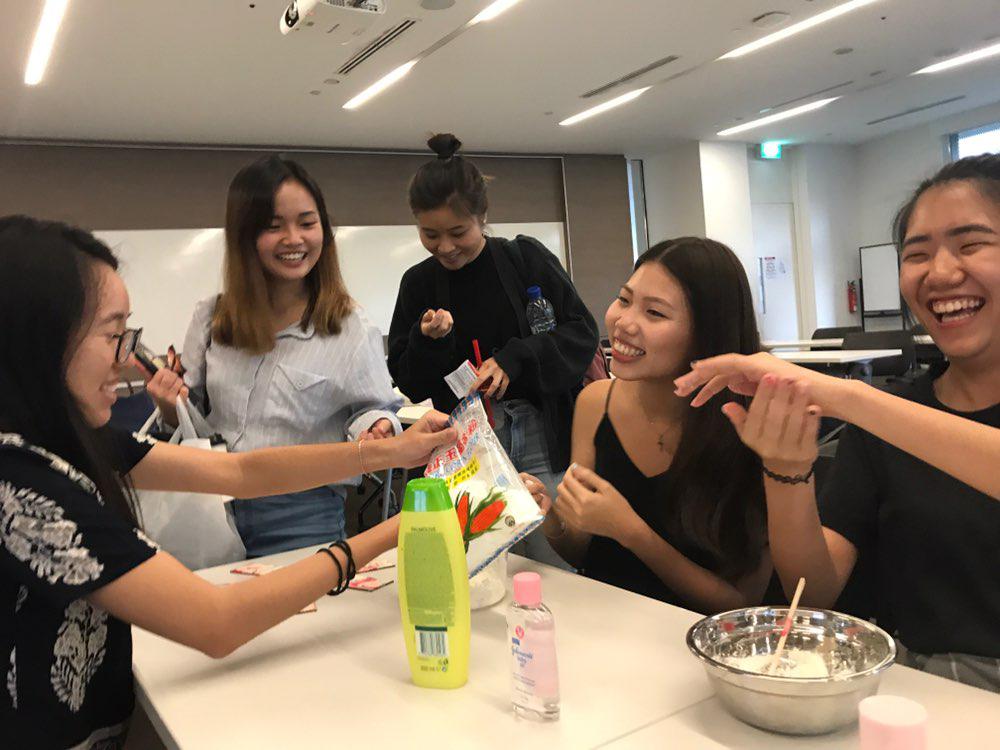
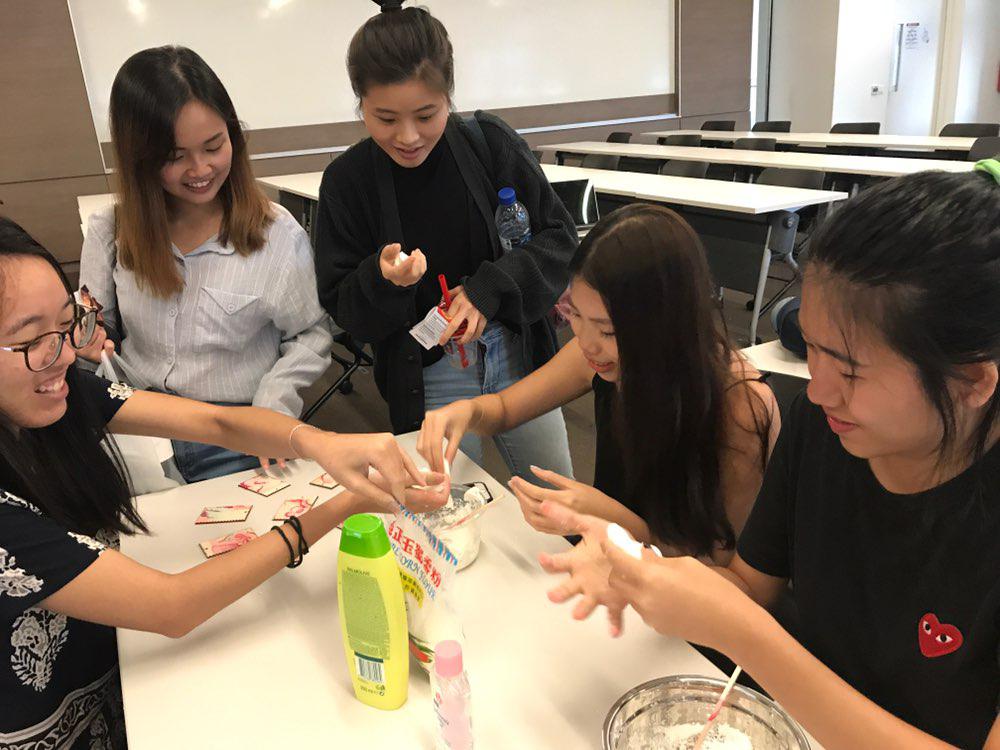
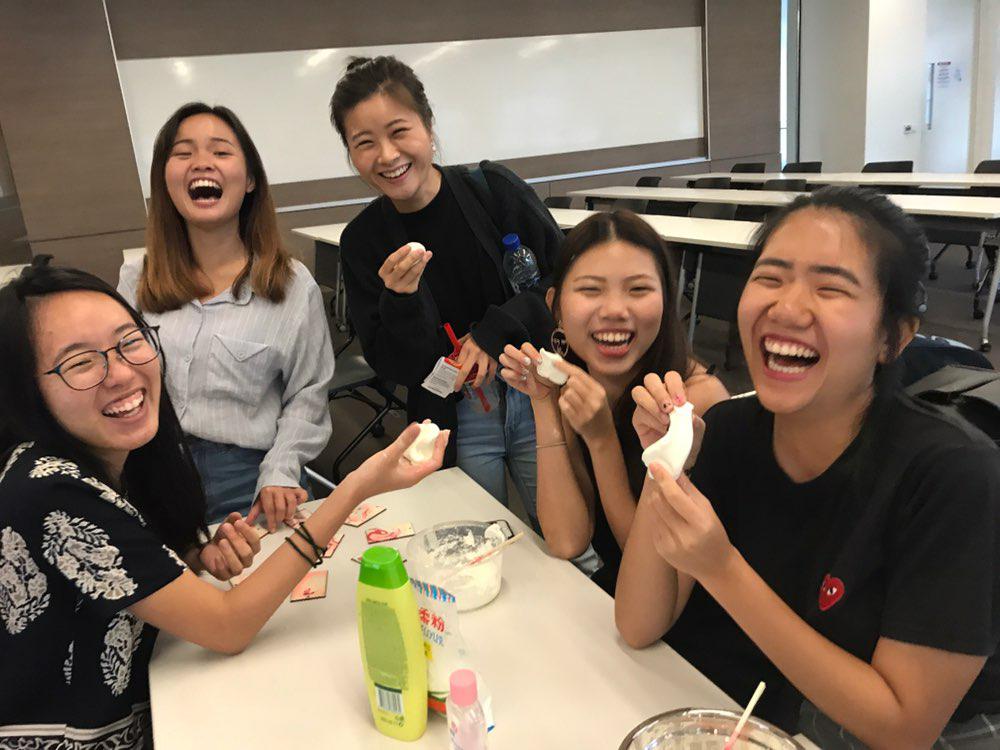
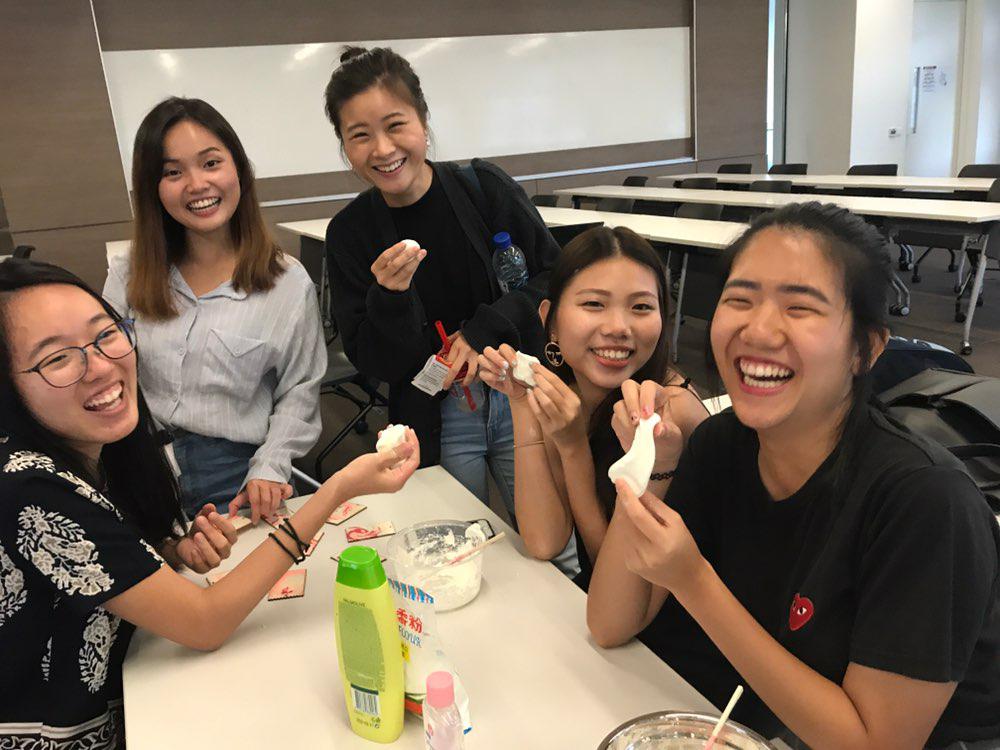
The movie that I watched was Mr. Nobody (2009). It is about Nemo Nobody (yep, that’s his name) a 117-year-old- man who is the last mortal on Earth after the human race achieved quasi-immortality. Before he dies, he recounts his “past” when he had to make a critical decision and we get to examine the speculative narrative of alternative life paths he could have lived with three different women. Essentially, it is a story about choice and the ‘what ifs’ of life.
A small design decision that I noticed was the use of genetic pigs as the immortality technology in the year of 2092. Every person (except Nemo) has genetically compatible pet pigs. Instead of food, the pigs are harvested for stem cells which allow an endless renewal of cells and thus, everlasting life for humanity.

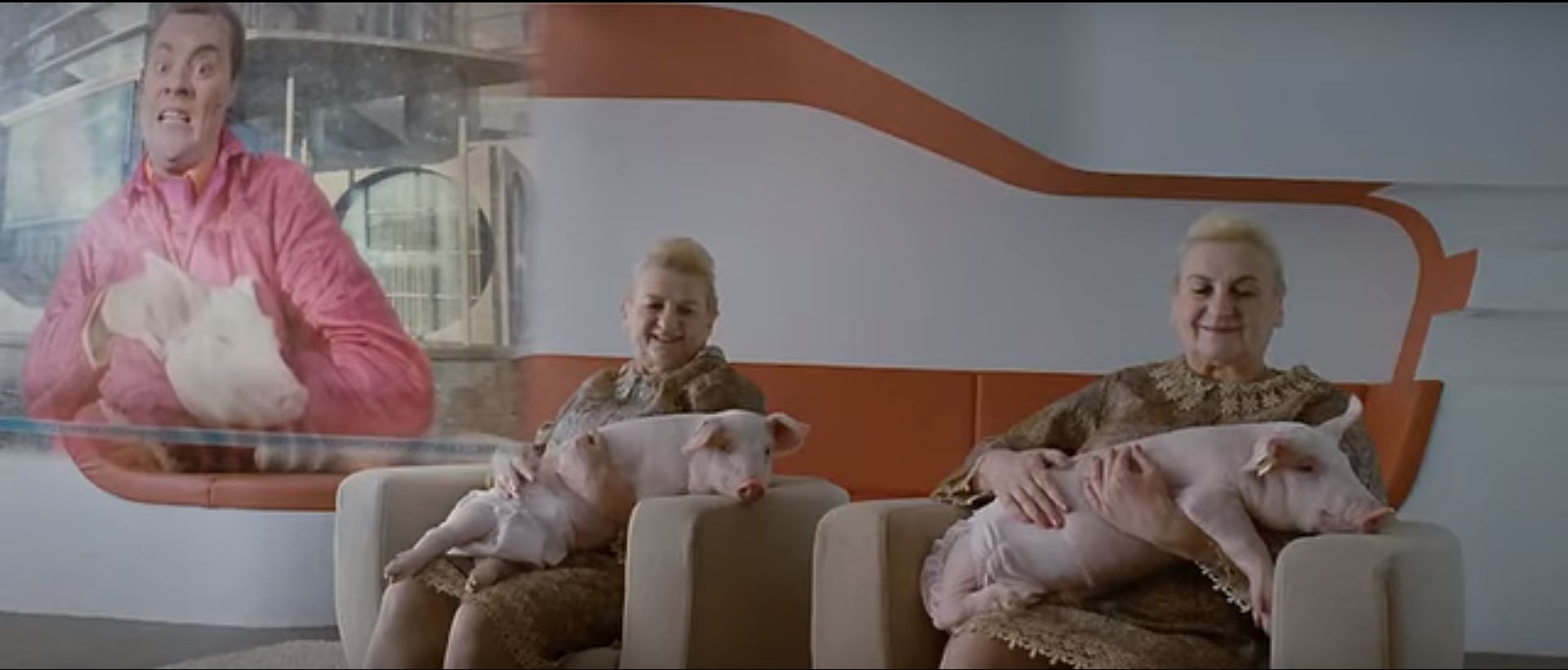
Watch the whole futuristic world set-up here: https://www.youtube.com/watch?v=h1OzVk8XnZc
Creative Practice
Tattooing
Sociological Issues
Technological Development
Storyworld Genre
Science-fiction
[OLD] Storyworld Description
Once considered a stigma in society, tattoos have become the norm for everyone. What better way for those in power to keep track of each and every individual’s life, by having them emblazon their life story across their own body? Gone is the need to dig up personal documents, financial statements or medical records to figure out the background of a person. Just look at their body! Dictated by the ruling party, every milestone in life will be commemorated with a suitable tattoo. Just graduated? Get a tattoo. Got a promotion? Get a tattoo. Got into a relationship, or just came out of a break up? Get a tattoo. People no longer hire clowns or face painters at birthday parties, but a tattoo artist instead. Responding to the drastic increase in demand, tattoo artists are constantly on call and have developed a wearable worksite that enables them to take appointments outside of their traditional studio setting.
[REVISED] Storyworld Description
It’s the year 74700 and tattoos are no longer taboo. In fact, body modification goes beyond art and self-expression. It is a means of functionality for different life stages, at all ages. In this new world, parading information about yourself has extended beyond the online space. Skin becomes a medium where we wear our factual and personal identity on our sleeves. We update our tattoos just like social media, like Facebook or Twitter statuses.
For every milestone, there is a tattoo. It’s become a societal norm to get a tattoo whenever someone wants to share a personal event – anything from a break up, to getting a new pet.
In addition, the law also ordains that people ‘update’ their skin (within one working day) when they change in age, education, career and health. What better way for those in power to keep track of each and every individual’s life by having them emblazon their life story across their own body? Gone is the need to dig up personal records. Considered as civil servants, tattoo artists are highly trained and respected professionals who are expected to get the job done in the most efficient and precise manner. They are easily distinguished by the latest wearable gear – Verte 74700, a hybrid exoskeleton-toolkit that carries the essential instruments of the tattoo trade while keeping their balance and posture in check.
With so many people to tattoo daily, tattoo artists are high in demand. But in this fast-paced society, there is limited time for people to make their way to tattoo studios. Not only that, they also have to constantly monitor their health and well-being because there’s no time for them to feel ill. Hence, tattoo artists have adapted to working on-the-go – ready to give anyone a new skin.
Cover Art

Microfiction #1
In the middle of a cold, faded-brown bench sat John, sprawled in a deflated manner. He threw his head back and looked up.
“Was the sky always like this? Boring. Blank. Blue,” he thought.
His arms spread lifelessly by his side. His arms which were cluttered with tattoos – A number 26 (his age), a gear (degree in mechanical engineering), the GoFast logo (automobile company he works in) and a milk carton with a huge red cross (lactose intolerant). But this one tattoo – a cloud with the initials J ❤️ E – felt uncomfortably pressed against his skin.
It was about time to let this cloud go. A miserable sigh escaped his lips as he took out his phone and made the necessary call. The screen lit up: “Booking confirmed!”
Within minutes, an all-too familiar figure donned in their advanced gear approached him. John have had gotten so many tattoos in his life, but this might just be the most painful one yet.
Microfiction #2
She glanced at her watch, waiting for the last chorus of ‘Happy Birthday’ to die down around the room. Same old, same old.
Caitlyn had been assigned to this family for years — had seen how the parents aged over time, and how their children grew from little infants to the young adults they were now. This was their youngest daughter’s coming of age party as she stepped into adulthood at the age of 21.
It took awhile for everyone to settle down, with the birthday girl taking seat centerstage. Caitlyn tightened her Verte 74700 around her waist as she made her way to her client – her exoskeleton supporting her as she let her weight drop, sitting on air. For coming-of-age tattoos, they always took at least an hour.
“Ready?” she asked, while swiftly popping the ink holders open. The girl nodded eagerly. Caitlyn shot the girl a smile. So many years of tattooing but seeing the excitement in their eyes never gets tiring.
She reached for her tattoo machine that was attached to her side. Hopefully her back wouldn’t ache too much by the time she was done. She still had five other appointments before the day came to an end.
I got the chance to see the process of a fish dissection. This is a common practice for marine biologists who study fish in order to find out more about the anatomy and life cycle of aquatic creatures for conservation purposes.
Tools
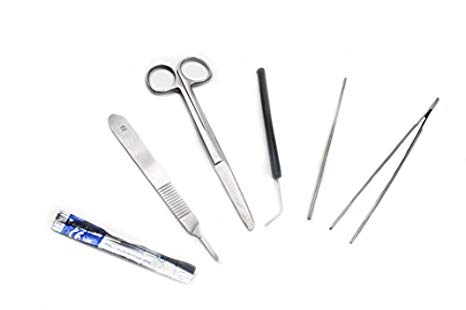
Worksite
The experiments are usually done in a research lab, with access to appropriate equipment, chemicals, etc. There are usual procedures to be followed to ensure that the experiments are done in a systematic and proper manner.
Process
The fish dissected was called a common carp. First, the width and the length of the fish was measured using the tape and the vernier calliper. Different parts were measured such as the mouth size, which says a lot about its diet and initial environment.
Then, the needles were placed around to position the fish when cutting it up. The scalpel was used to cut the fish from tail to the fin. Afterwards, the organs were taken out slowly and carefully using the tweezers.
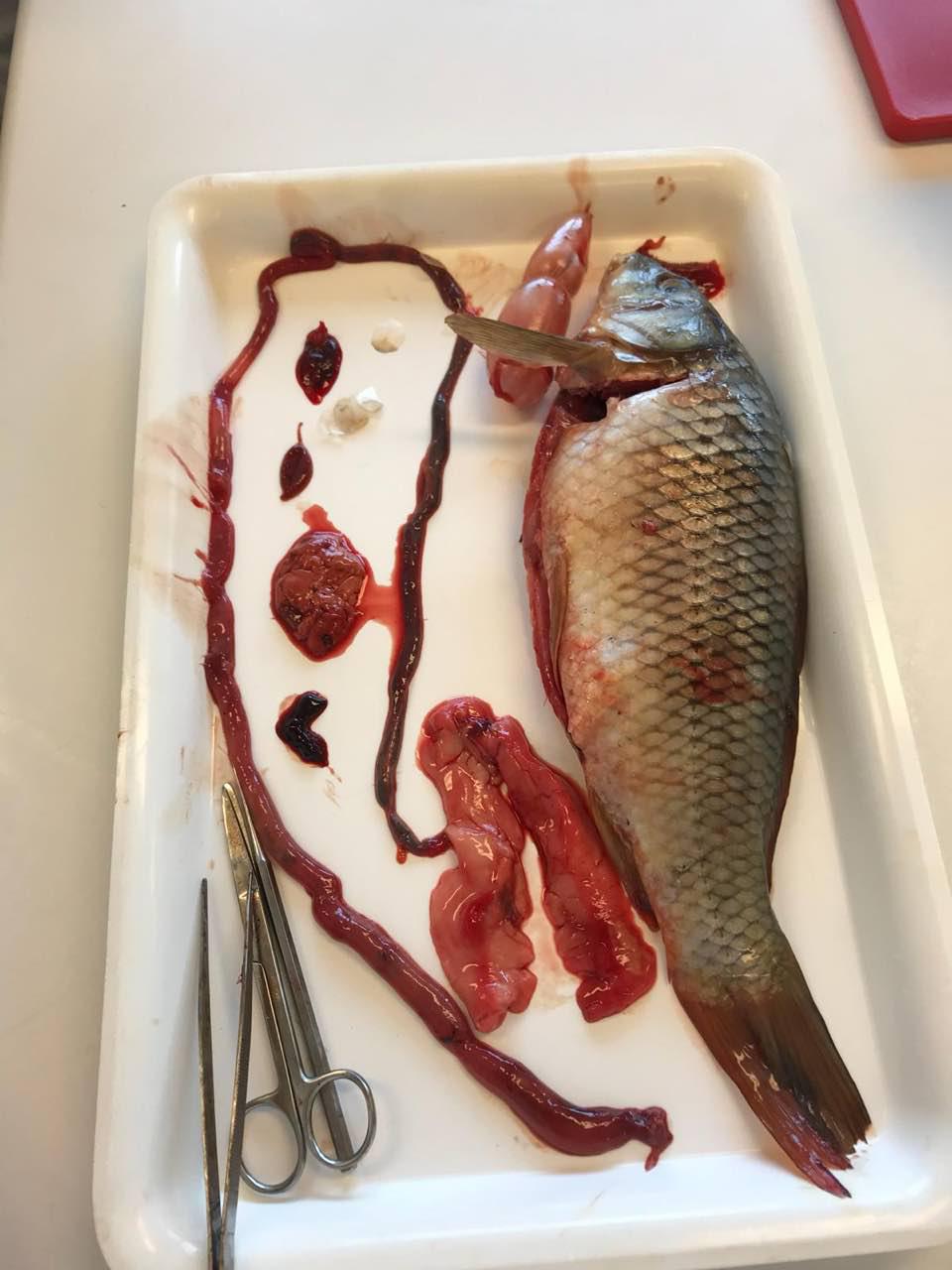
After gathering all the individual organs, each were measured and weighed. The microscope was also used to look at the scales of the fish which shows how old the fish is.
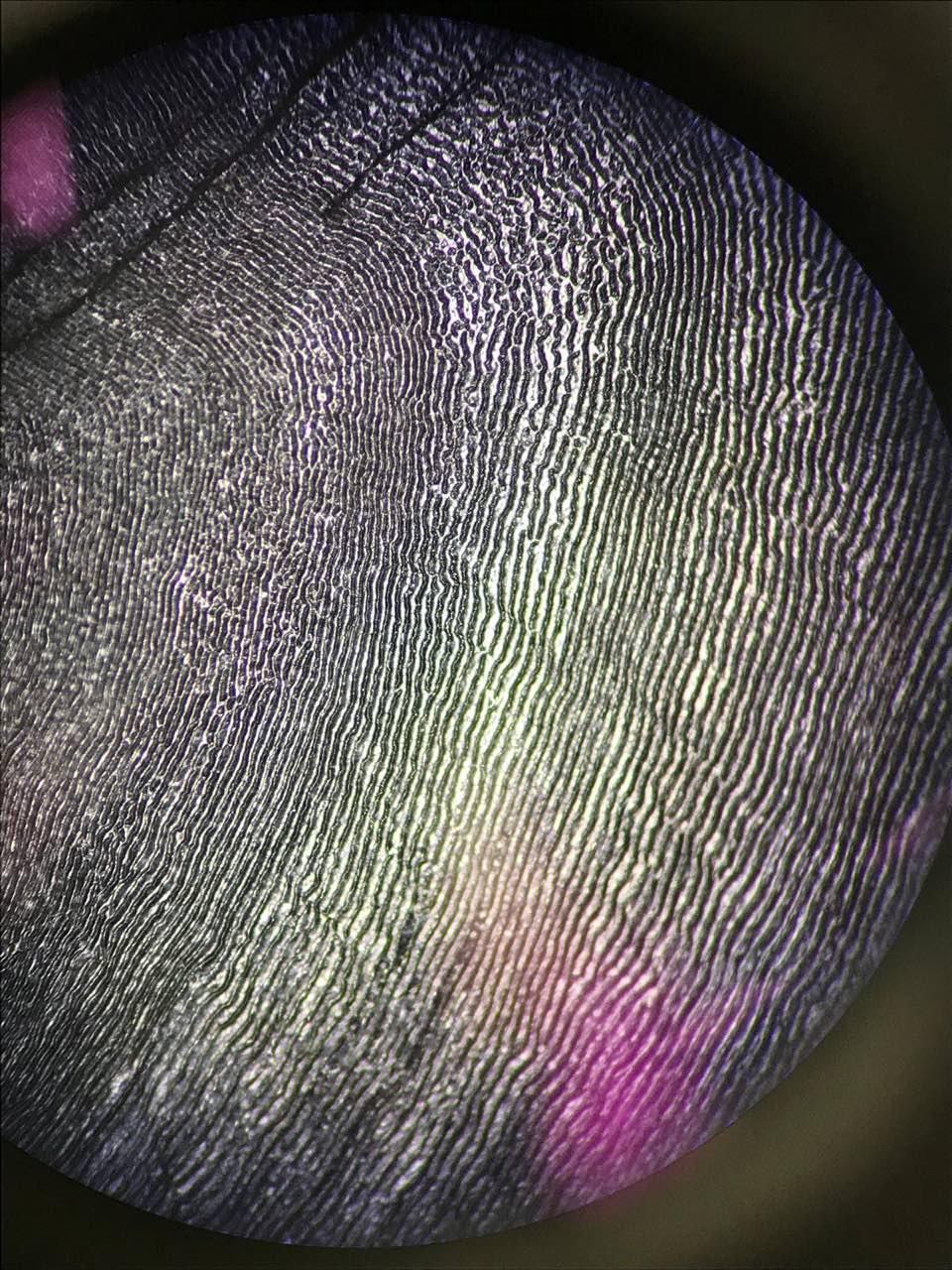
Thoughts
It can get quite messy with all the blood but it’s still an interesting process. One of the challenges would be trying to take out the organs because one has to do it slowly, without affecting the other parts. At one point, the fat can be all lumped up together making it difficult to separate each organ. The scalpel is also really sharp so putting too much pressure might accidentally cut an organ and resulting in more blood and inaccurate measurements after the experiment. Overall, each tool has an important function and ensures that the dissection is done as carefully and properly as possible.
My friend is a tattoo artist and I went over to his studio to find out more about the process. For obvious reasons, I was not able to try out the practice but could just observe.
Tools
• Illustration methods
• Special stencil paper
• Tattoo machines
• Needles
• Ink
• Gloves
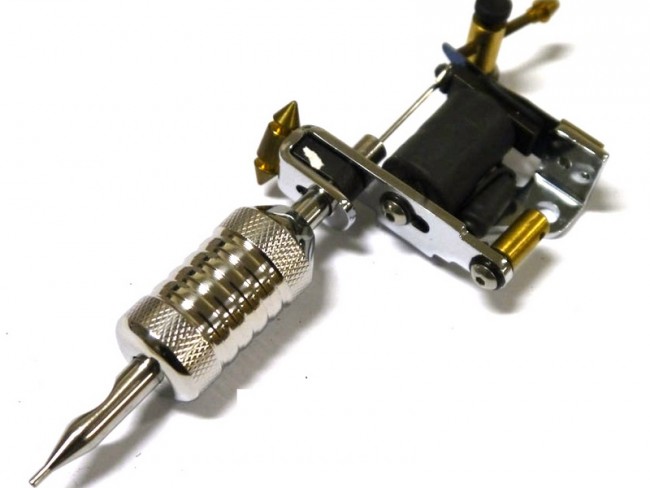
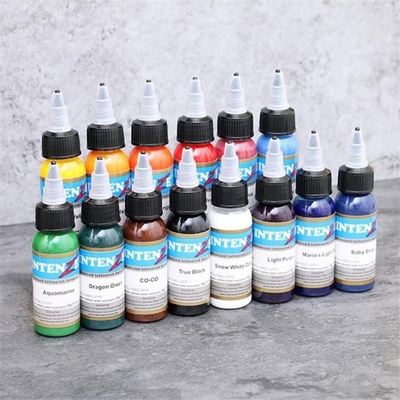
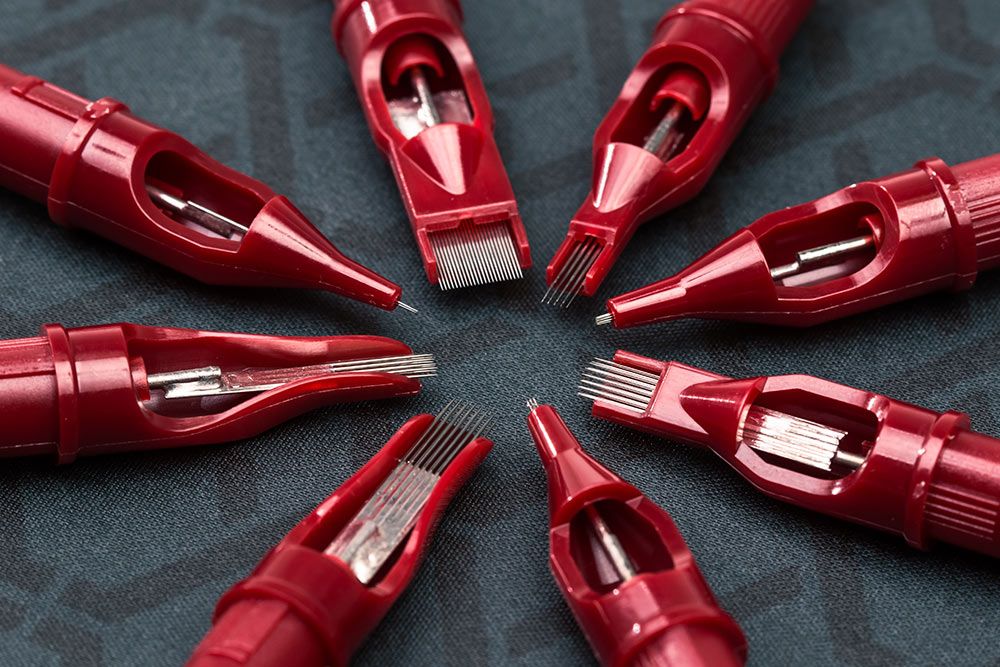
Worksite
The usual worksite for tattoo artists is at a tattoo studio. The studio that I went to had an artistic vibe, with lots of paintings and designs everywhere. Although the space did feel a bit stuffy and can get a bit intimidating with the loud buzzing sounds. When it came to tattooing, I found out that one of the critical factors is actually hygiene. It is important for both the environment and equipment used to be sterile.
Process
The process is quite straightforward. Once the customer has selected their tattoo design, the stencil will be printed on a special paper. This stencil will be transferred onto the skin, coming off as a blue-purple temporary ink.
Before the actual inking, the artist has to wear gloves and single-use needles are used as well. There are different types of needles which will be attached to the tattoo machine. Each needle has different functions ranging from lining, shading and colour packing. The ink is placed in little ink caps and there’s also vaseline to help moisture and allow the needle to slide along the skin much more easily.
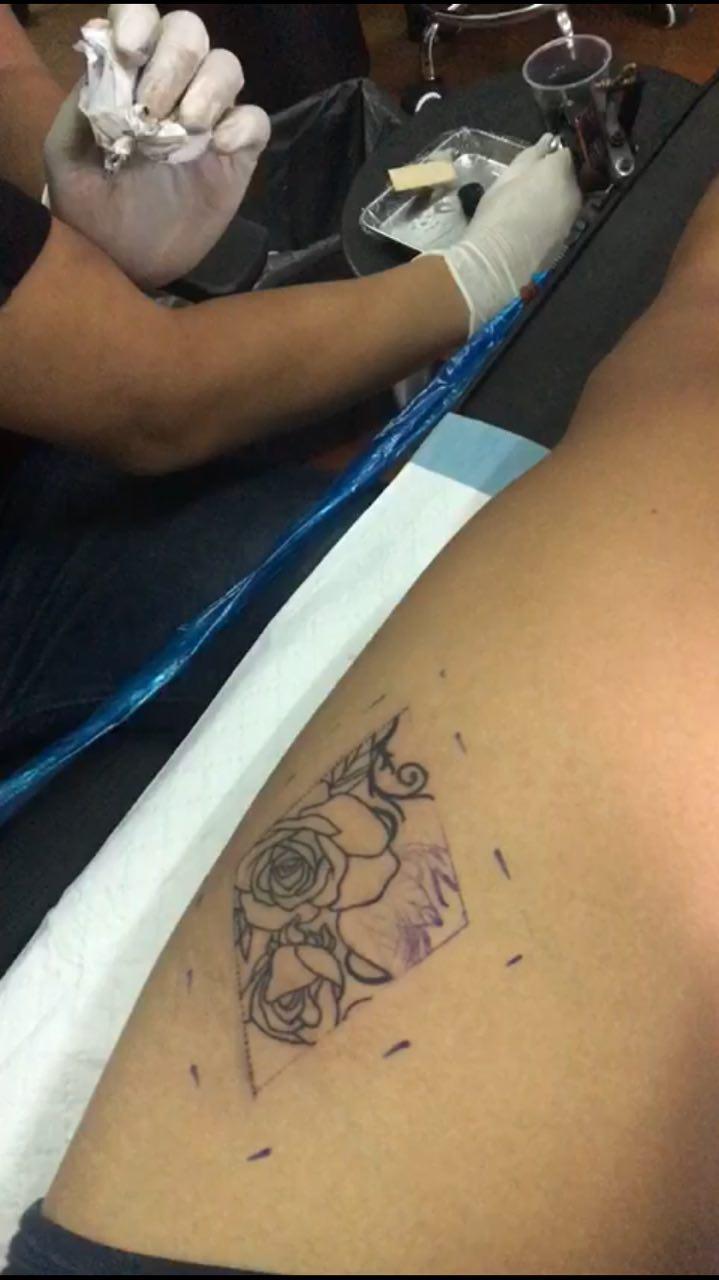
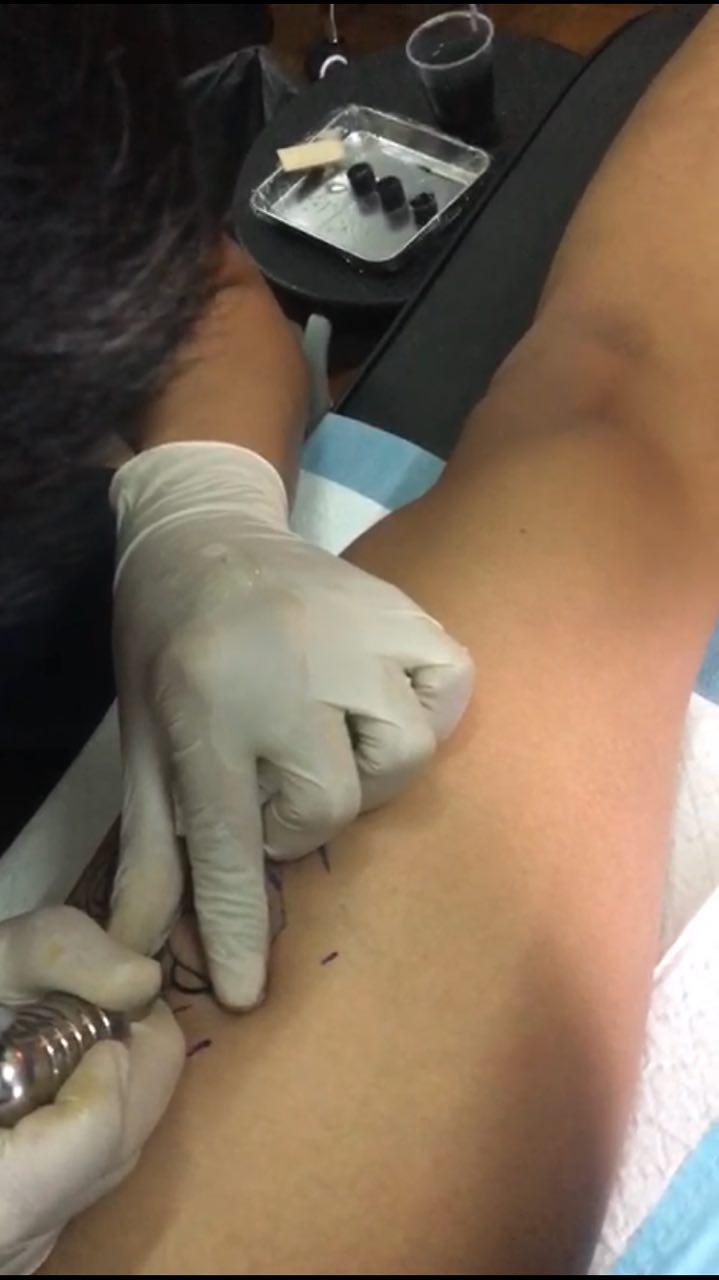
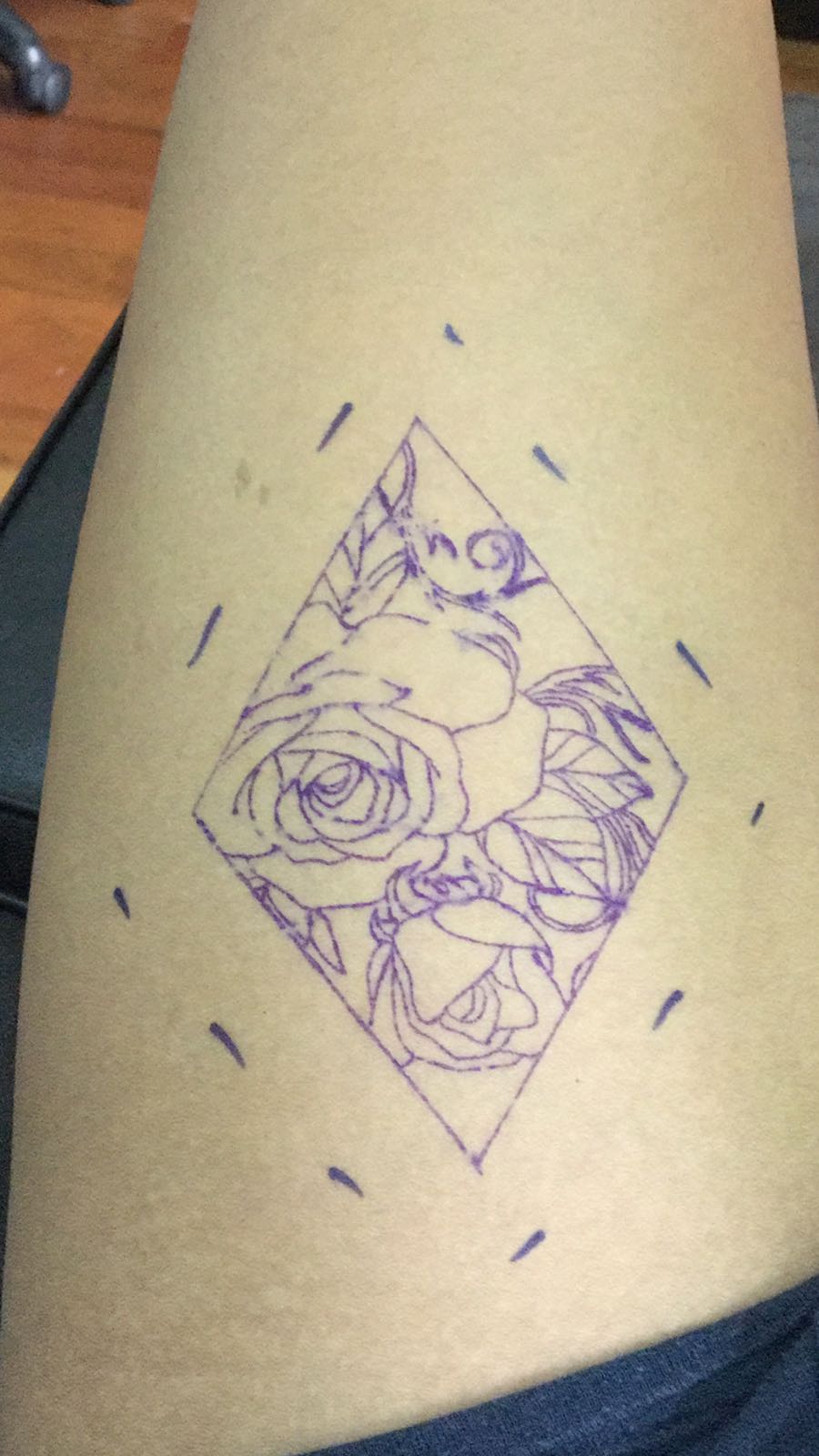
Once the inking is done for several hours, the body part will be wrapped with some form of wrap/bandage to avoid any infection.
Thoughts
From an observer’s point of view, it might have looked simple for something so permanent on your skin. However, it required focus and consistency especially when you’re inking for hours. As for the tools, there are a wide variety but they are portable and may be used in different environments. However, hygiene might be an issue as behind the scenes, a lot of importance is placed in ensuring that the equipment used is clean and sterile.
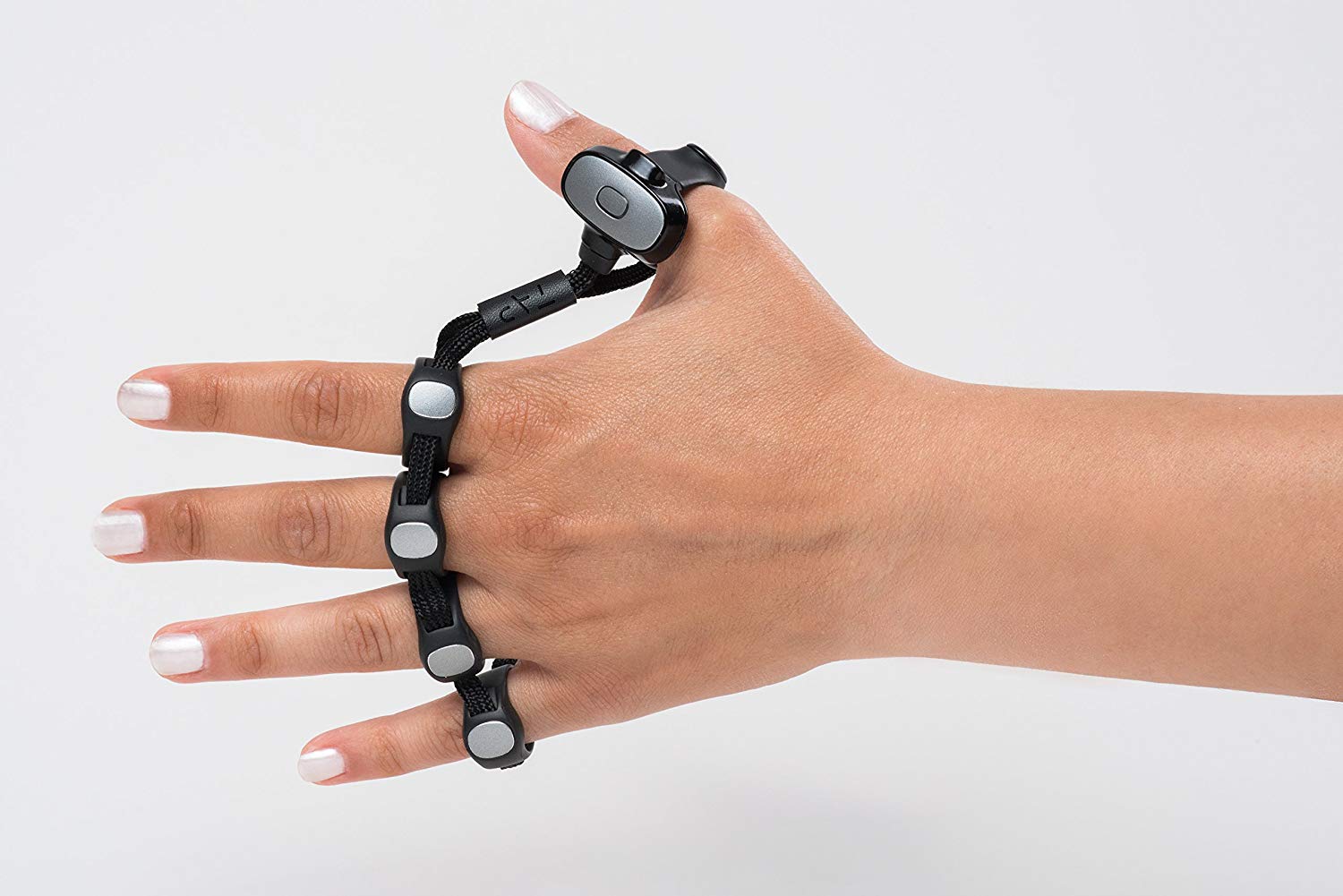
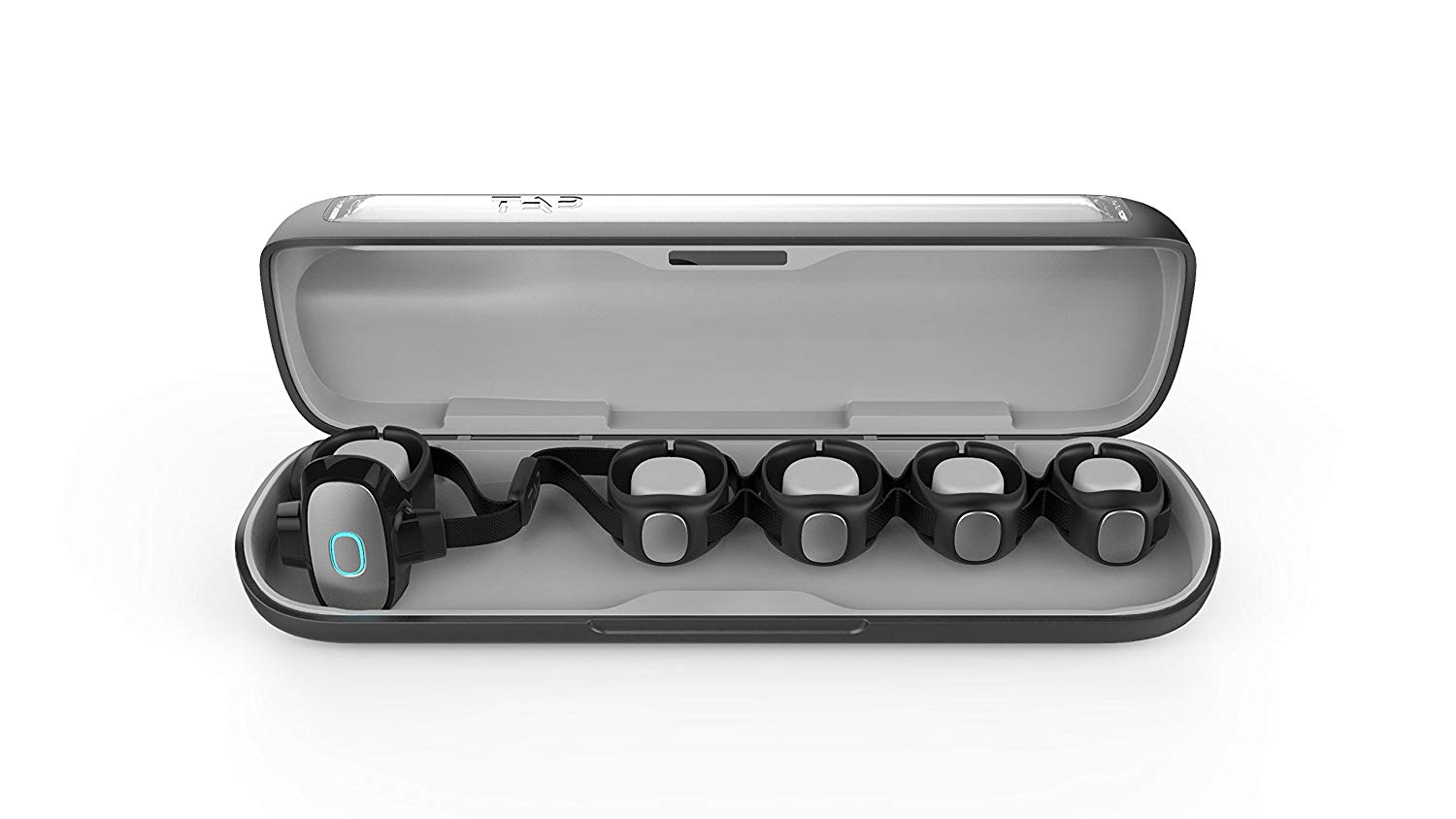
Practice it works in:
Tap is for people who want to stay within the virtual reality environment but may be constrained by their physical surroundings. For instance, professionals can use this device to boost their presentation, work on the go and control complex commercial devices like never before.
People can use Tap when they travel for work, commute in small spaces and are in environments that are not suitable to lug around a bulky laptop or external keyboard to pair with your phone or tablet.
Specific use:
Tap is a wearable Bluetooth keyboard that converts finger movements into keypresses, so users can compose text, play games, point, click and scroll using just about any available surface. The strap has five holes that you put your fingers through, and it’s embedded with sensors that track information about your hands and fingers.
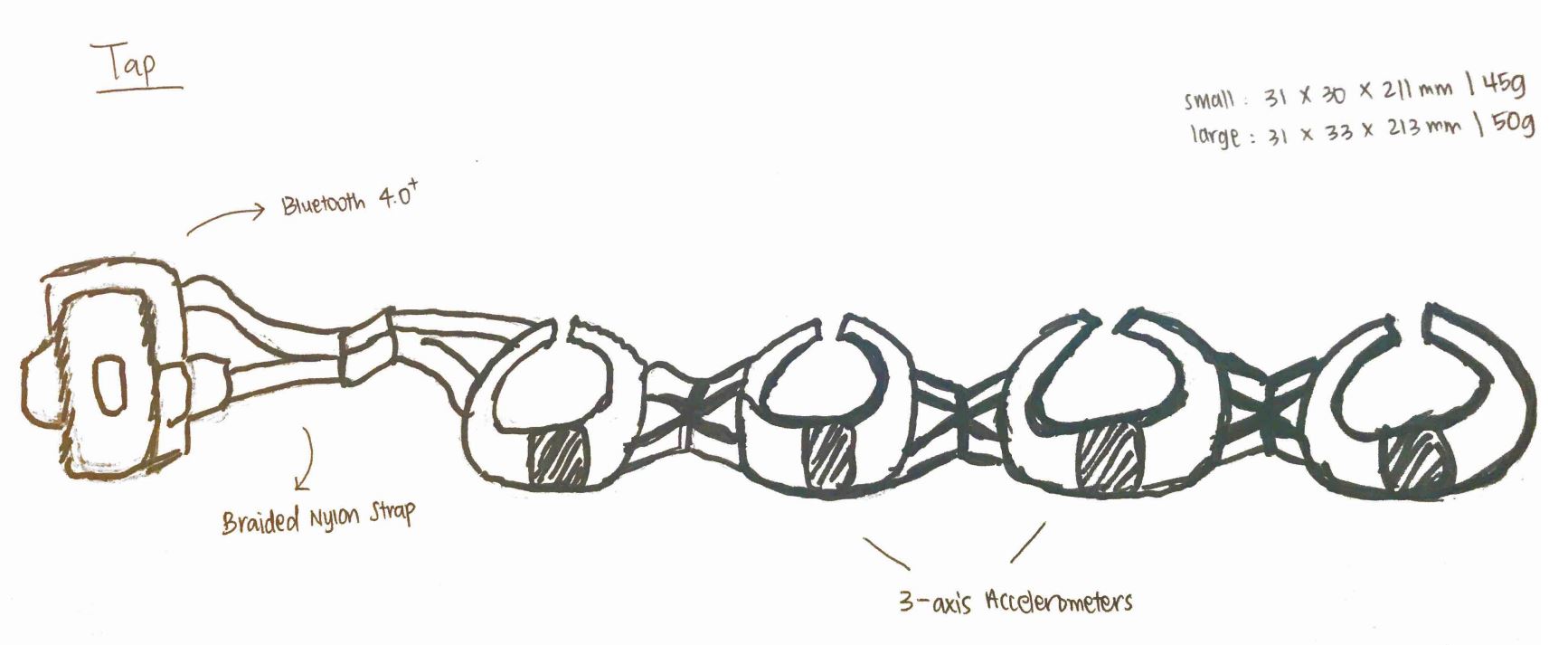
By connecting to Bluetooth enabled devices, professionals are able to control their presentations or other media by tapping on surfaces. You can even take notes discreetly and efficiently! The possibilities are endless with the ability to activate and control software such as virtual & augmented reality, robotics and drones.
Mobility:
You can take Tap anywhere on the go! Packed in a slick carrying and charging case, it is a portable device that you can use on almost any surface.
Utility vs Fashionability:
Other than looking badass with a hi-tech brass knuckles wrapped around your fingers, Tap is also a comfortable wearable that slides and sits nicely onto your hand.
However, users may not be able to work as efficiently on soft surfaces. It is still better to tap your fingers with a good amount of force on a solid surface like a desk or table. It is also important to manually disable Tap when you’re not actively typing to avoid accidental keypresses.
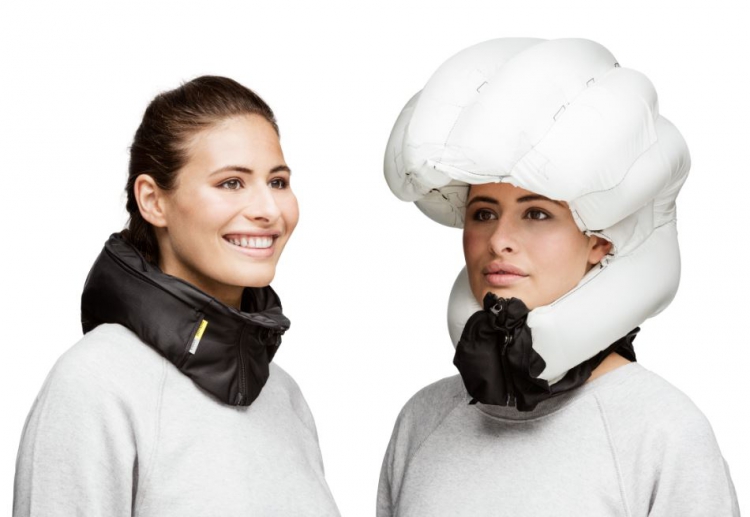
Practice it works in:
The Hövding Cycling Airbag is the helmet for people who don’t like wearing helmets. Invented as a wearable airbag for cyclists, it protects the wearer’s head, neck, and shoulders in the event of a crash. In an independent study conducted by Stanford University, it was found to give the wearer up to eight times better protection than a standard helmet does.
For future focus, the Hövding may be applied to activities outside of cycling such as elderly with poor balance and even for professions within high-risk environments such as construction workers.
Specific use:
You simply put the Hövding around your neck, clip on the zip, press the button, stick it in your bag and off you cycle! In the event that the wearer actually gets into an accident – be it aggressive or subtle – the Hövding picks up on those movements and it will inflate. It goes from a scarf to a fully protected airbag around your head in in less than 100 milliseconds.
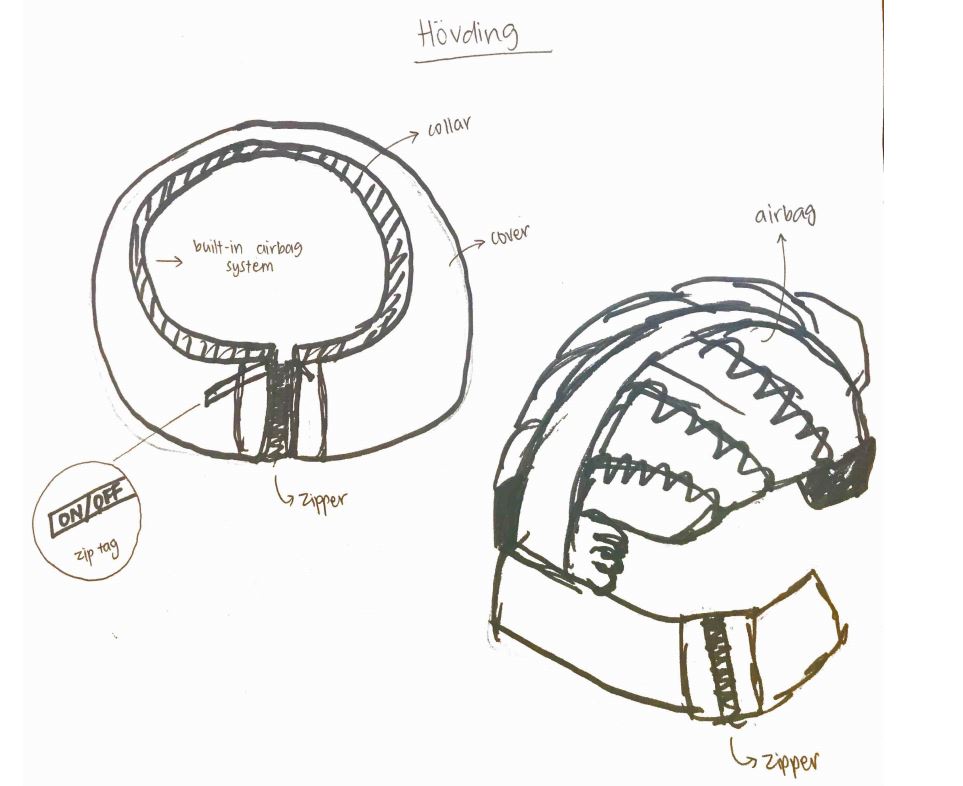
The device contains internal sensors which can detect a crash based on data gathered from thousands of simulated cycling accidents. When the device is turned on, it begins self-diagnostic tests and the sensor begins tracking your movement 200 times per second. It understands the difference between movements that are leading to an accident and safe everyday cycling.
If you’re in an accident and nobody is around, the Hövding sends out a signal to a loved one or the emergency services.
Mobility:
The conventional helmet is a hassle in terms of mobility as you have to carry it around once you’re off the bike. On the other hand, the Hövding sits nicely on your neck – packed with a battery, air bag and all that Swedish technology inside. It doesn’t need a companion app and definitely easier to lug around than a bulky helmet.
Utility vs Fashionability:
The Hövding, in its resting state, generally just looks like you’re wearing a scarf around your neck so it’s stylish (no helmet hair, yay!) and has no real hindrance on your ability to keep turning your head. It looks like a hood and is made in an ultra-strong nylon fabric that won’t rip when scraped against the ground. The fabric shell protects the device and can also change the design to match to your outfit.
However, when it’s activated, you are essentially wearing an inflated balloon on your head. If it turns out to be a dud or small accident where you can dust yourself off easily and the Hövding activates, the only thing hurt might be your pride.